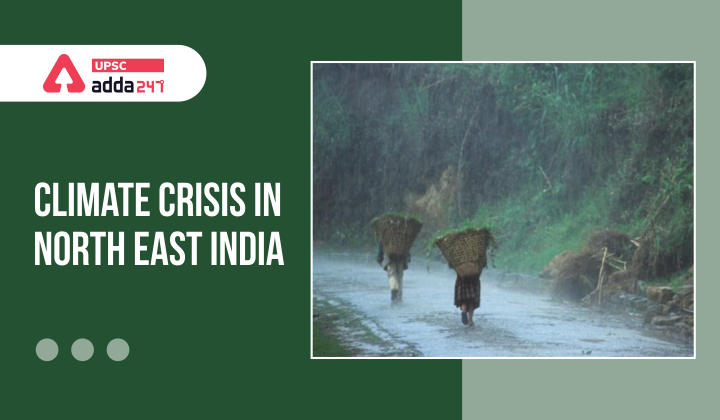Table of Contents
Relevance
- GS 1: Changes in critical geographical features (including water-bodies and ice-caps) and in flora and fauna and the effects of such changes.
Context
- North East India is showing various vagaries of climate change such as disruptive weather pattern that has stimulated the calamities, which has affected the geography of the region.
Key points
- The North East India, which normally receives heavy rainfall during the monsoon months (June-September), has changed character for the worse.
- The flood-drought cycle now has begun to happen within a year, especially during the monsoon.
- Even in the monsoon, the rains come in quick bursts and flood the region, followed by dry periods that leads to drought.
- Between 1989 and 2018, the region has showed a significant decreasing trend in monsoon rainfall.
IUCN World Conservation Congress
Assam
- Recently, a new scenario was presented in the state where the dry drought-like districts were intermixed with floods due to rainfall in other districts.
- The change in geography from the mountains to the plains is abrupt and steep, which makes the region naturally prone to flooding.
- The number of rainy days decreased in most districts to the north of the Brahmaputra. This means that increased rainfall now happens over fewer days, increasing chances of river flooding.
Deepor Beel Wetland and Wildlife Sanctuary
Arunachal Pradesh
- The increased flooding observed in Upper Siang and Upper Subansiri rivers may be due to an increase in rainfall.
- Upper Siang shows a significant decreasing trend in the number of rainy days, which translates to more rainfall over fewer days.
- Districts like West Kameng and East Kameng in the western part of the state showed a decrease in the flow of mountain springs and streams in recent decades, which could be due to the decrease in rainfall.

Nagaland
- Here, the gradient of the rivers is not as steep as it is in Arunachal Pradesh, hence the rivers are not as prone to flooding.
- Recent instance of heavy rainfall events, however, have brought floods to places that had not witnessed such calamities in decades.
International Day of Clean Air For Blue Skies
Sikkim
- North Sikkim showed an increasing trend in monsoon rainfall, which may be causing an increase in flooding in the Teesta River, a tributary of Brahmaputra River.
- This may have led to landslides downstream in South Sikkim, especially around Gangtok, a phenomenon that has been observed since 1997.
State of the World Trees Report
Manipur
- Around 67% of the population of the region is dependent on agriculture, which puts extreme pressure on a small region to feed its entire population.
- Therefore, changing rainfall patterns in the state will impact agriculture, which in turn will affect the state’s food security.
Phasing out HFCs: India Ratifies Kigali Agreement
Meghalaya
- The state receives 71% of its annual rainfall during the monsoon months.
- The district has flat-topped hills and several rivers, and has seen significant decrease in the number of rainy days.
- The unpredictability of the region can be gauged from the fact that the rainfall in July, the wettest month in the state, had a variability of 40%.
Mizoram
- While the overall rainfall in the 30 years has remained constant, the region has seen a substantial drop in the number of rainy days.
- This has been accompanied with a substantial increase in heavy rainfall days. The region receives 67% of its annual rainfall during the monsoon months.
Tripura
- The state has seen a decreasing trend over the 30 years, though it is not significant.
- The unique challenge, though, is that all districts now receive fewer overall rains during the monsoon season, which accounts for 60% of its annual rains.



 TSPSC Group 1 Question Paper 2024, Downl...
TSPSC Group 1 Question Paper 2024, Downl...
 TSPSC Group 1 Answer key 2024 Out, Downl...
TSPSC Group 1 Answer key 2024 Out, Downl...
 UPSC Prelims 2024 Question Paper, Downlo...
UPSC Prelims 2024 Question Paper, Downlo...
